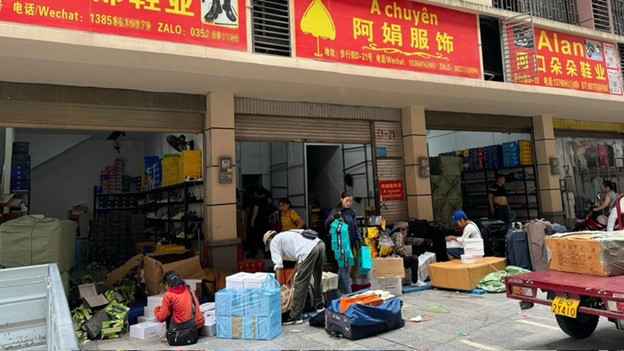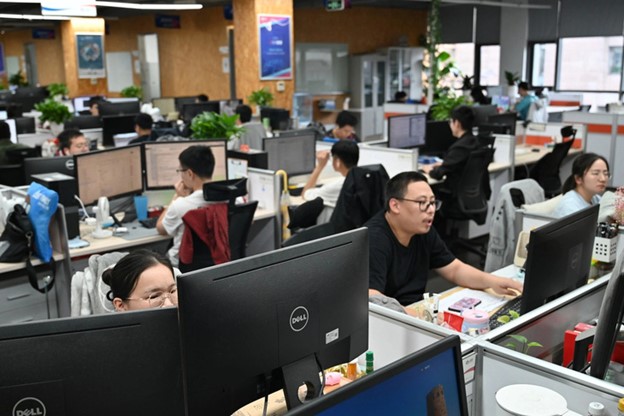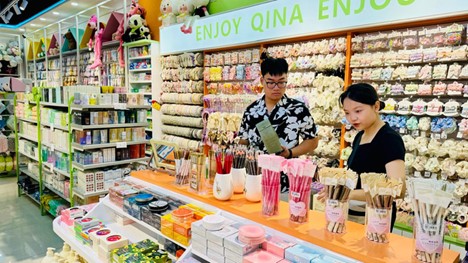The success of Chinese imports into the Vietnamese market is not only thanks to diversified and low-cost products but also systematic technology and logistics systems controlled by artificial intelligence (AI).
The application of AI helps Chinese companies track market changes and ensure they maintain a competitive advantage over Vietnam’s other source markets, thus paving the way for an influx of Chinese goods into Vietnam.
A leader of Best Inc., a Chinese logistics giant, told Tuoi Tre (Youth) newspaper reporters that the group’s 200 technological engineers focus primarily on digitalization in order to serve 100 million customers across eight countries, with Vietnam being one of its key markets.
The firm uses AI in order to predict consumption trends in Vietnam and create detailed sales plans meant primarily for e-commerce platforms.
The Best Inc. leader informed that the number of orders placed by Vietnamese customers on e-commerce platforms during sales events triples that on normal days.
Its main customers are traders on Shopee, TikTok, Lazada, and Facebook, traders owning warehouses, and logistics units of enterprises.
In addition to using AI to manage transport activities, Chinese transport enterprises can calculate the volume of goods in warehouses, the Best Inc. leader noted.
“In order to improve sales, we have built a force responsible for surveying Vietnamese consumers’ habits,” director of a logistics company in Pingxiang, China said, adding that the company has solutions to connect with over 40 cross-border e-commerce platforms like Amazon, Ebay, Ali Express, Shopify, Shopee, Lazada, and TikTok Shop.
Chinese enterprises have also adopted technologies to conduct large-scale live-streamed sessions to secure orders from Vietnam.
Logistics giants in China have invested in technologies to support Chinese sellers in creating orders through such live-streamed sessions.
Technologies have been also utilized to manage warehouses, load cargo onto vehicles, and choose optimal transport routes and vehicles.
Chinese firms have used robots to speed up the order handling process.
|
|
| Chinese enterprises use AI to forecast consumption trends of Vietnamese consumers to prepare goods. Photo: Bong Mai / Tuoi Tre |
Closed ecosystems
In China’s Hekou County, which borders the northern Vietnamese province of Lao Cai, hundreds of stores with both Chinese and Vietnamese information on their signboards offer customers every commodity under the sun, including footwear, clothing, confectionery, suitcases, handbags, kitchenware, fans, and hair dryers.
The owners and managers of these stores tend to speak fluent Vietnamese.
H., the manager of a jewelry and hair accessory store, said her outlet tends to attract Vietnamese customers thanks to its diversified product range.
On the low end, some of these products cost just three renminbi (US$0.4) each. Those who buy wholesale can get them as low as VND3,000-4,000 ($0.1-0.2) apiece.
According to an employee at a similar store, these products have a margin of approximately 30 percent.
Once purchased, they are transported to border gates in Lang Son Province or Quang Ninh Province in northern Vietnam and can make it all the way to Ho Chi Minh City just four to seven days later, the man affirmed.
Chinese enterprises have developed complete ecosystems to secure orders, collect goods, transport them across the border, and deliver them to customers in Vietnam.
Retailers in Southeast Asia only need to place orders and negotiate prices with producers, as the director of cross-border transport at a Dongguan warehouse in China explained.
Chinese firms handle the transport and export processes, often completing shipments within just 24 hours.
Major clients in Vietnam, including Shopee, Lazada, Miniso, and Mixue, rely on these services, according to industry insiders.
|
|
| Chinese enterprises offer many products at low costs to Vietnamese wholesalers. Photo: Bong Mai / Tuoi Tre |
High trade deficit with China
Vietnam exported $27.7 billion worth of products to its northern neighbor in the first half of this year, inching up over six percent over the year-ago period, according to the General Department of Vietnam Customs.
The country spent $66.7 billion on imports from China during the six-month period, soaring 34 percent against the same period last year and accounting for 37 percent of its total imports.
China was Vietnam’s largest supplier of computers, electronic products and accessories, and materials for the apparel and footwear sectors.
Like us on Facebook or follow us on Twitter to get the latest news about Vietnam!




















































